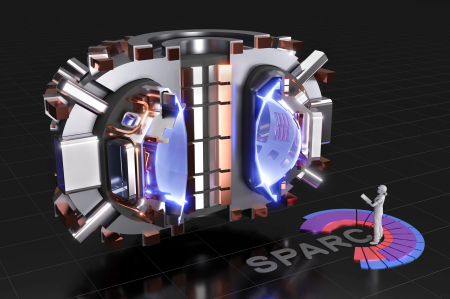John C. Baez's Blog, page 39
November 12, 2020
US Environmental Policy (Part 2)
On his first day in office, President-elect Biden plans to have the US rejoin the Paris climate accord. He has also pledged to sign ten executive orders on his first day in office:
• Requiring aggressive methane pollution limits for new and existing oil and gas operations.
• Using the Federal government procurement system—which spends $500 billion every year—to drive towards 100% clean energy and zero-emissions vehicles.
• Ensuring that all U.S. government installations, buildings, and...
November 8, 2020
US Environmental Policy (Part 1)
This blog does not allow discussion of partisan politics. But I can still list some ways in which US environmental policy will change if Biden becomes president.
First and foremost, the US will rejoin the Paris Climate Agreement.
Besides leaving the Paris Climate Agreement, the Trump administration did many other things that didn’t require approval from Congress:
• Nadja Popovich, Livia Albeck-Ripka and Kendra Pierre-Louis, The Trump administration is reversing nearly 100 environmental rules. H...
US Environmental Policy
This blog does not allow discussion of partisan politics. But I can still list some ways in which US environmental policy will change if Biden becomes president.
First and foremost, the US will rejoin the Paris Climate Agreement.
Besides leaving the Paris Climate Agreement, the Trump administration did many other things that didn’t require approval from Congress:
• Nadja Popovich, Livia Albeck-Ripka and Kendra Pierre-Louis, The Trump administration is reversing nearly 100 environmental rules. H...
November 3, 2020
Reducing Bird Deaths Caused by Wind Turbines
According to the United States Fish and Wildlife Service, about 300,000 birds were killed by wind turbines in the US in 2015. Another study estimated that wind turbines killed about 500,000 birds and 900,000 bats in the US in 2012.
This sounds bad. But it’s actually tiny compared to some other causes of death! A 2014 paper estimated that power lines kill somewhere between 12 and 64 million birds each year in the US. And another paper estimates that between 1.3 to 4 billion birds are killed by...
October 25, 2020
Exponential Discounting
Most of us seem to agree that the promise of a dollar in the future is worth less to us than a dollar today, even if the promise is certain to be fulfilled. Economists often assume ‘exponential discounting’, which says that a dollar promised at some time  is worth
is worth

dollars in hand at time  The constant
The constant  is connected to the ‘interest rate’.
is connected to the ‘interest rate’.
Why are economists so wedded to exponential discounting? The main reason is probably that it’s mathematically simple. But one argument for it goes roug...
October 21, 2020
The SPARC Fusion Reactor
There’s a lot of excitement about a new approach to fusion power:
• Henry Fountain, Compact nuclear fusion reactor is ‘very likely to work,’ studies suggest, The New York Times, 29 September 2020.
Scientists developing a compact version of a nuclear fusion reactor have shown in a series of research papers that it should work, renewing hopes that the long-elusive goal of mimicking the way the sun produces energy might be achieved and eventually contribute to the fight against climate change.
Co...
October 18, 2020
Epidemiological Modeling With Structured Cospans
This is a wonderful development! Micah Halter and Evan Patterson have taken my work on structured cospans with Kenny Courser and open Petri nets with Jade Master, turned it into a practical software tool, and used that to build a tool for ‘compositional’ modeling of the spread of infectious disease. By ‘compositional’, I mean that they make it easy to build more complex models by sticking together smaller, simpler models. Furthermore, they’ve illustrated this tool by rebuilding part of the mo...
October 13, 2020
Open Petri Nets and Their Categories of Processes
My student Jade Master will be talking about her work on open Petri nets at the online category theory seminar at UNAM on Wednesday October 21st at 18:00 UTC (11 am Pacific Time):
Open Petri Nets and Their Categories of Processes
Abstract. In this talk we will discuss Petri nets from a categorical perspective. A Petri net freely generates a symmetric monoidal category whose morphisms represent its executions. We will discuss how to make Petri nets ‘open’—i.e., equip them with input and output ...
October 12, 2020
Recursive Saturation
Woo-hoo! Michael Weiss almost taught me how to prove every nonstandard model of PA is ‘recursively saturated’:
• John Baez and Michael Weiss, Non-standard models of arithmetic 20, 12 October 2020.
Suppose you have a model of Peano arithemetic. Suppose you have an infinite list of predicates in Peano arithmetic:  Suppose that for any finite subset of these, your model of PA has an element
Suppose that for any finite subset of these, your model of PA has an element  making them true. Is there an element
making them true. Is there an element  making all these predicates true?
making all these predicates true?
Of course this doesn’t hold in...
October 10, 2020
Decimal Digits of 1/π²
This formula may let you compute a decimal digit of  without computing all the previous digits:
without computing all the previous digits:

It was discovered here:
• Gert Almkvist and Jesús Guillera, Ramanujan-like series for  and string theory, Experimental Mathematics, 21 (2012), 223–234.
and string theory, Experimental Mathematics, 21 (2012), 223–234.
They give some sort of argument for it, but apparently not a rigorous proof. Experts seem to believe it:
• Tito Piezas III, A compilation of Ramanujan-type formulas for 
It’s reminiscent of the famous Bailey–Borwein–Plouffe formula for 

This lets yo...
John C. Baez's Blog
- John C. Baez's profile
- 29 followers




